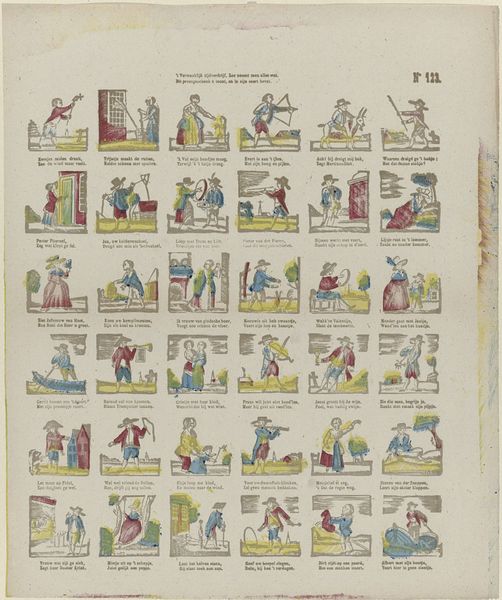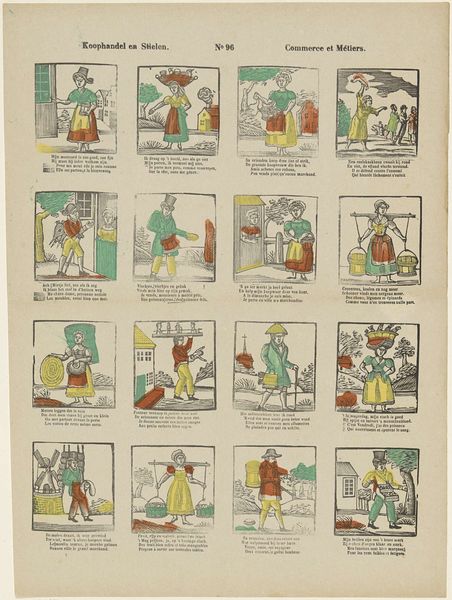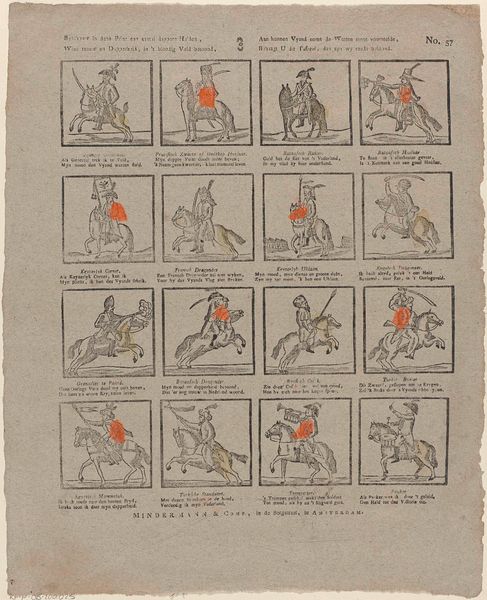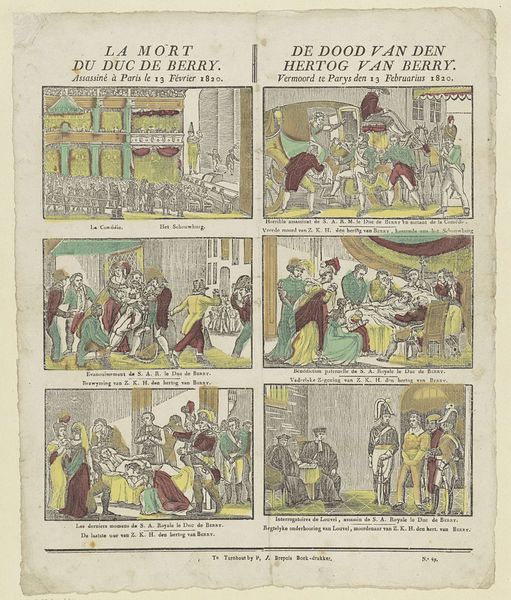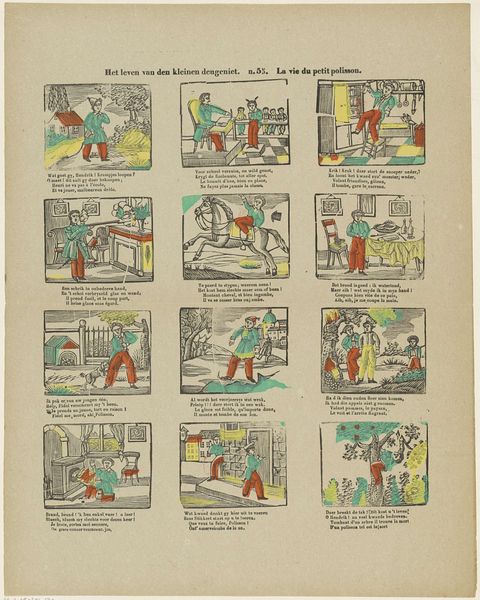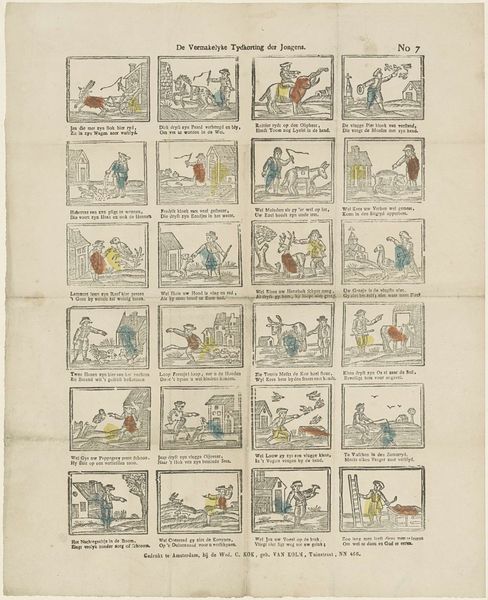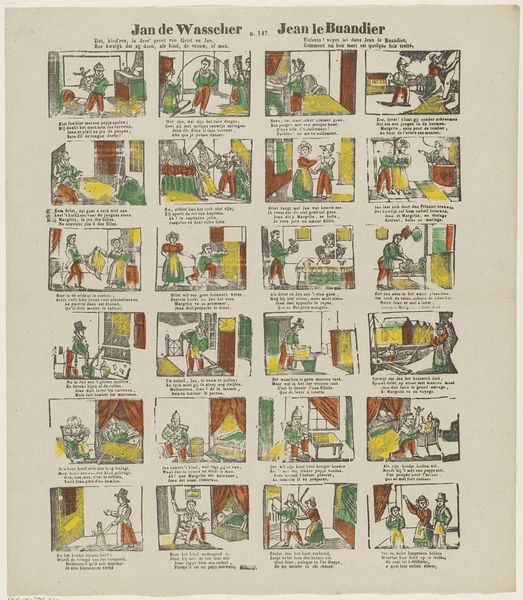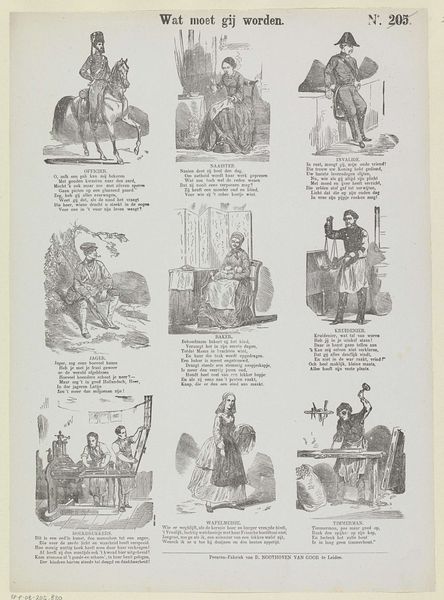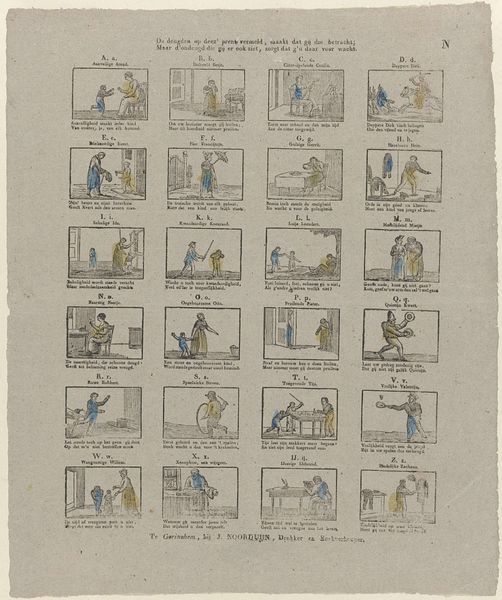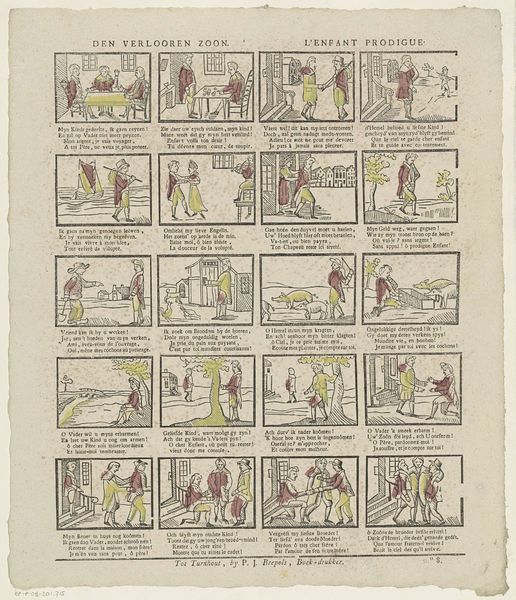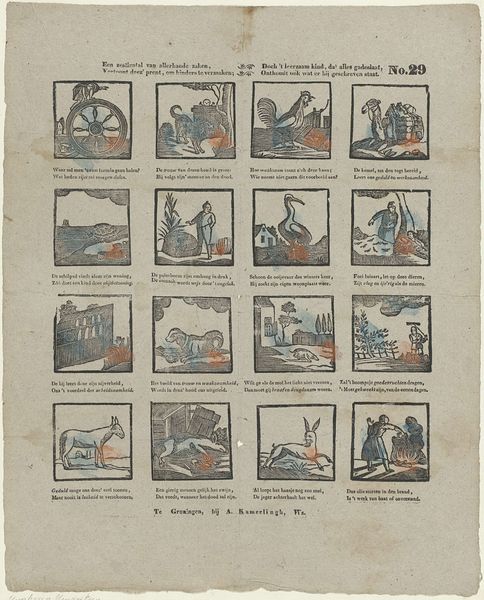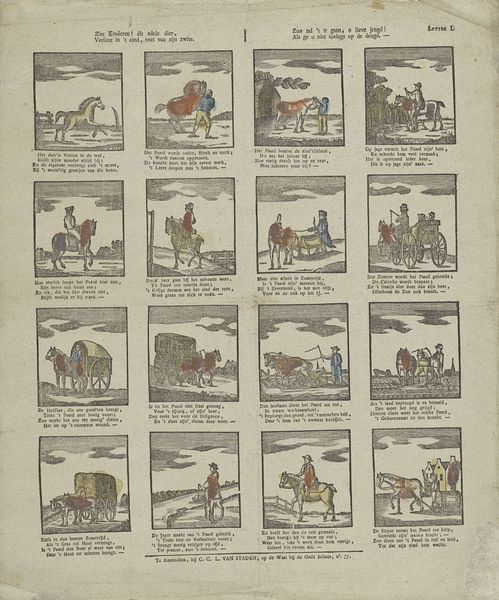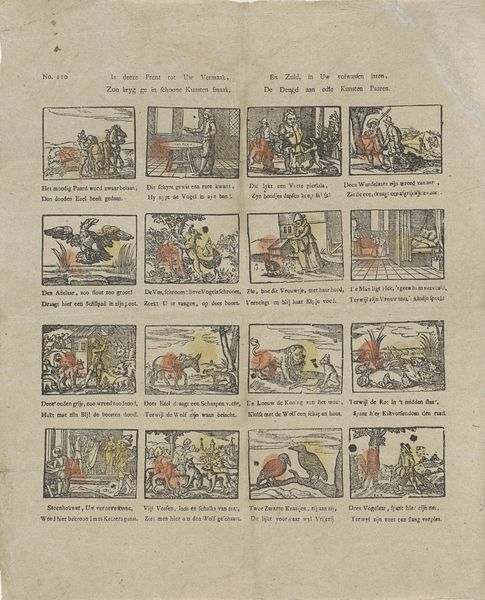
drawing, print, etching, textile, paper, engraving
#
drawing
#
narrative-art
#
dutch-golden-age
# print
#
etching
#
textile
#
paper
#
genre-painting
#
history-painting
#
engraving
Dimensions: height 345 mm, width 200 mm
Copyright: Rijks Museum: Open Domain
Curator: Look at this intriguing sheet, "Driekoningenbriefjes," dating back to the period between 1800 and 1833, attributed to Philippus Jacobus Brepols. The Rijksmuseum holds this fascinating object. It's a print combining etching and engraving on paper, and it appears that the sheet was once adhered to some kind of textile. Editor: It reminds me of fortune telling cards mixed with old Dutch Masters. Something quaint and absurdly charming, a visual poem of miniature characters. The colors are muted, the lines delicate... what were they thinking back then? Curator: These were 'King's Day Letters.' In essence, they were prompts for a popular game during Epiphany. Each small vignette displays a character— a doctor, a cook, a jester—paired with verses to be read aloud, functioning a bit like parlor game prompts. The paper, print, text and little dabs of pigment together construct a culture of both visual art and performative storytelling, designed to involve all classes of folk as a collective experience. Editor: So it’s performative art distributed to the masses! Makes me wonder about the socioeconomic conditions around this "genre painting," you know? Who purchased them? Were these a readily-produced, relatively-disposable commodity for widespread consumption, or unique artworks produced in small studios for wealthy patrons? I imagine families gathered, wine flowing, some dressed as these characters? Curator: It’s believed to have been relatively accessible. These weren’t high art intended for elite collections, but items purchased and circulated within the middle class and beyond. These cheap popular prints helped to shape social identities, creating a shared understanding of Dutch trades and professions through material culture. Editor: Suddenly, this isn't a distant artifact, but a key into human dynamics... very alive! That playful critique reminds us that humans throughout time create theater wherever possible to examine who we are. I imagine them laughing… figuring things out through performance. Curator: Indeed! Considering “Driekoningenbriefjes” in terms of material production gives context to an interactive cultural and creative form rooted in paper and pigment—one with continuing social reverberations that echo into our own participatory-media-driven age. Editor: That changes my perspective! What appeared quaint is revealed as subversive and complex. Looking through time—you see yourself looking back.
Comments
No comments
Be the first to comment and join the conversation on the ultimate creative platform.
